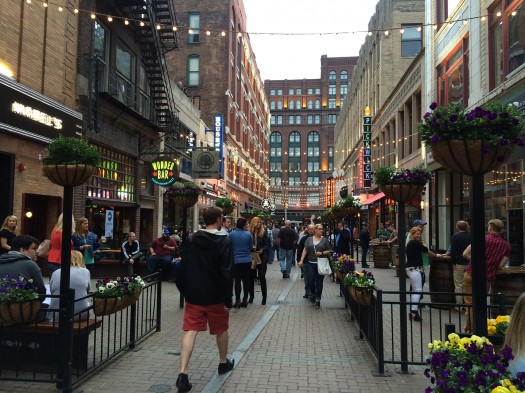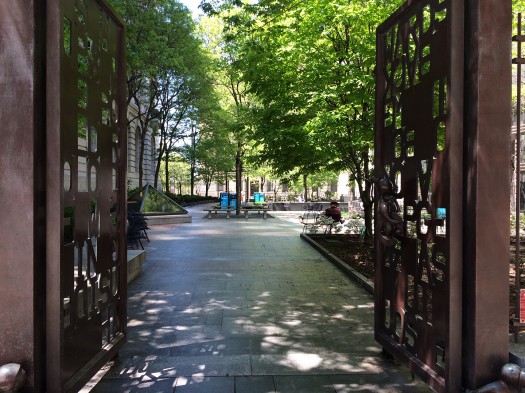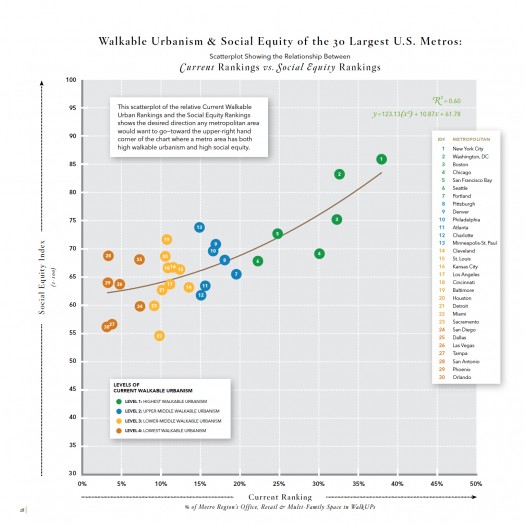A Placemaking Journal
Inclusive Cities: Inclusion equals diversity plus equity
 The placemakers way is to enable the triple bottom line of resilience: environment, economy, and society, trying to balance the needs of people, planet and profit. And yet it’s always easier to measure the impacts of our collective choices on profit — or even on the planet — than it is on people. We’ve blogged extensively about happiness, with equity as an essential component. Social equity has been defined as equal opportunity in a safe and healthy environment. Social equity requires fair, just and equitable public policy. Social equity is a generator of social capital.
The placemakers way is to enable the triple bottom line of resilience: environment, economy, and society, trying to balance the needs of people, planet and profit. And yet it’s always easier to measure the impacts of our collective choices on profit — or even on the planet — than it is on people. We’ve blogged extensively about happiness, with equity as an essential component. Social equity has been defined as equal opportunity in a safe and healthy environment. Social equity requires fair, just and equitable public policy. Social equity is a generator of social capital.
The other night, a conversation with Mary Jane Loustel about equity reminded me of a blog I’ve been meaning to write for awhile. It was sparked in Cleveland back in May, thanks to a forum hosted by the Association of Art Museum Directors @MuseumDirectors at the Cleveland Museum of Art @ClevelandArt, with the following thoughts from Cathy Winter @onBoardCanada, Jeff Chang @zentronix, and Thelma Golden @studiomuseum.
How do we make communities more generative and sustainable? Tap into creativity. Follow artists, who find the seams where the conflict is happening.
Great public places create spaces for contemplation that let us think through our differences with more power and peace.
Equal access and sharing with power are concepts that have been denatured from the word diversity. Diversity creates better, more efficient, more creative organizations.
If we all think alike, no one thinks very much. ~Einstein
Relentless incrementalism is needed for systematic change. Diverse communities begin to engage when they see “my voice counts.” Aspirations are not enough for systemic change. Inclusion can’t happen without diversity and equity.
Cites that are color-blind or color-brave are willing to take on the tough discussions on race. Being “color-brave” means having conversations in an open way to support inclusion. A great TEDtalk by Mellody Hobson @MellodyHobson gives pointers on being color-brave.
When diverse groups are given opportunity to serve on boards, group-think ends and new networks open. More diversity leads to more benefits. One person is a token. Two people are a special interest group. 30% diverse is a real shift.
This Cleveland forum on equity ties in closely to a recent Walrus Talk @walrusmagazine at another art museum, the Winnipeg Art Gallery @wag_ca on The Indigenous City, with the following thoughts from Lindsay Knight, aka Eekwol, hip hop artist; Blair Stonechild, author and professor of Indigenous Studies; Zoey Pricelys Roy @Pricelys1, spoken word poet, social entrepreneur, and author; Rosanna Deerchild @RoDeerchild, host of CBC’s Unreserved; Jaimie Isaac, writer, curator, artist; John Ralston Saul @JohnRalstonSaul, philosopher, novelist, essayist; and Tom Jackson @tomjacksonca, actor, singer, and activist.
Different world views happen in the city all the time, but great cities find the space to allow peaceful expression. Reflection and ceremonies can still happen with a grande americano in my hand.
Traditional indigenous culture can happen in the city but at the same time on the land. Land is so much more than trees and dirt. Honor the natural laws that demand care.
Open ourselves to place, belonging, creative tension, and inclusivity. We have a massive opportunity with how to inhabit cities with an indigenous perspective.
The recent indigenous move to cities is a return to historic spiritual centres. Every Canadian city except Regina is built on a historic indigenous centre. Indigenous people are the fastest growing part of the Canadian population.
How is indigeneity obvious in your city’s public art? What says, “We are on treaty land?” How do we honor where we’ve been and who we are?
Inclusive, healing cities balance human aspects: mental, emotional, physical, and spiritual. If you are a storyteller, your responsibility is to tell your story. Even if it’s troubling. Look to the circle for unity and strength where there is room for everyone.
Warrior up! Hunt for compassion and humility and the ability to succeed. ~Lindsay Knight
We all have a song. A musical compass forged by love, compassion, and wellness. And forgiveness and humor, “Oh Canada, your home’s on native land.” Find your path and you find your song. It’s all about seeing the potential, in ourselves and others and in place.
The fact that art museums are convening important conversations on inclusion makes me want to ensure that we placemakers are quicker to put these cultural institutions higher up on our key stakeholders list for city planning initiatives.
U.S. metros with the highest levels of walkable urbanism rank highest on measures of social equity, according to a recent report, Foot Traffic Ahead. Clearly it is necessary to keep policies and practices in place to encourage equity, diversity, and inclusion, however they are likely to be of marginal benefit without walkability.
Social equity is a generator of social capital. Which in turn builds more equity. Every ten minutes of commuting reduces all forms of social capital by 10%, per Bowling Alone.
Walkability may be one of the greatest generators of equity, because it connects people to place and to each other. And if you don’t have a lot of it at home, you may want to fire up a social innovation lab to help out.
Just now when I was looking up my Canadian friend, Mary Jane Loustel, to try to link back to her twitter feed, I was reminded that she doesn’t tweet. However, I enjoyed a few ideas from her many lectures shared by others, including one that sums up today’s ideas: Seeking to understand leads to being understood.
If PlaceShakers is our soapbox, our Facebook page is where we step down, grab a drink and enjoy a little conversation. Looking for a heads-up on the latest community-building news and perspective from around the web? Click through and “Like” us and we’ll keep you in the loop.





